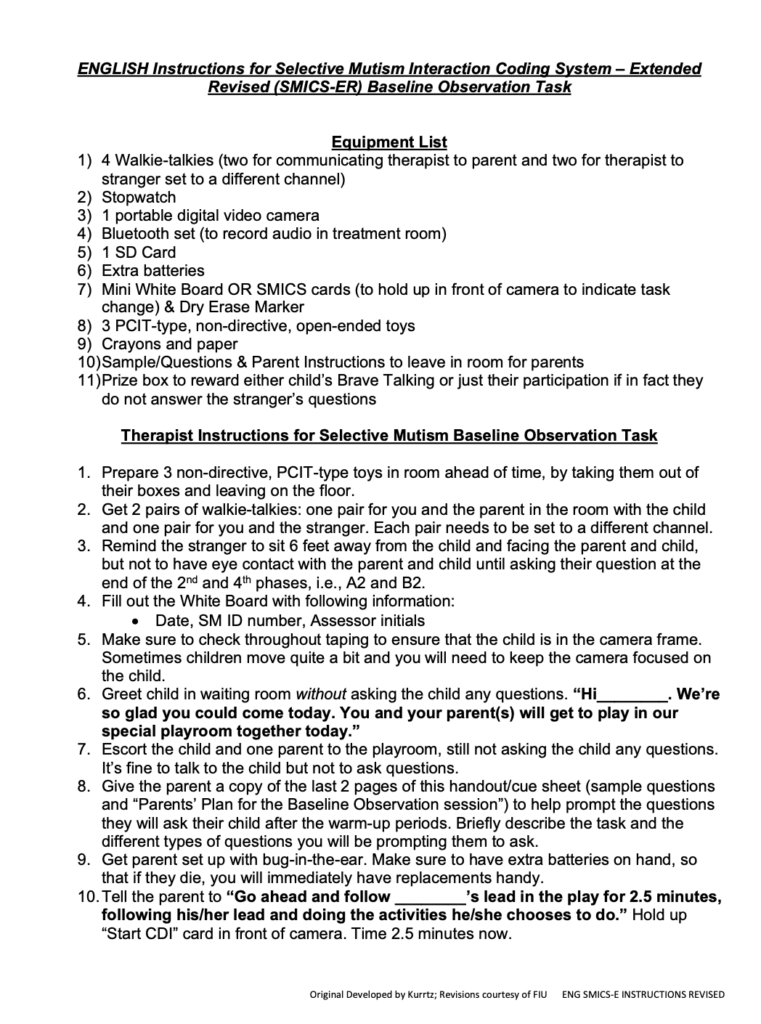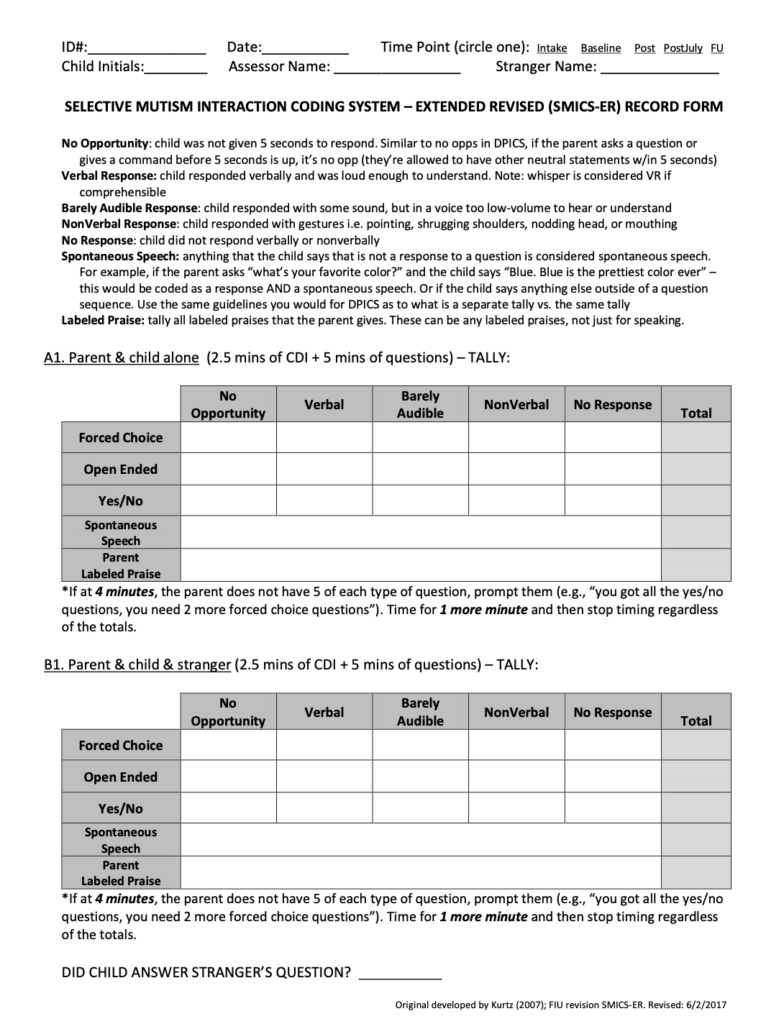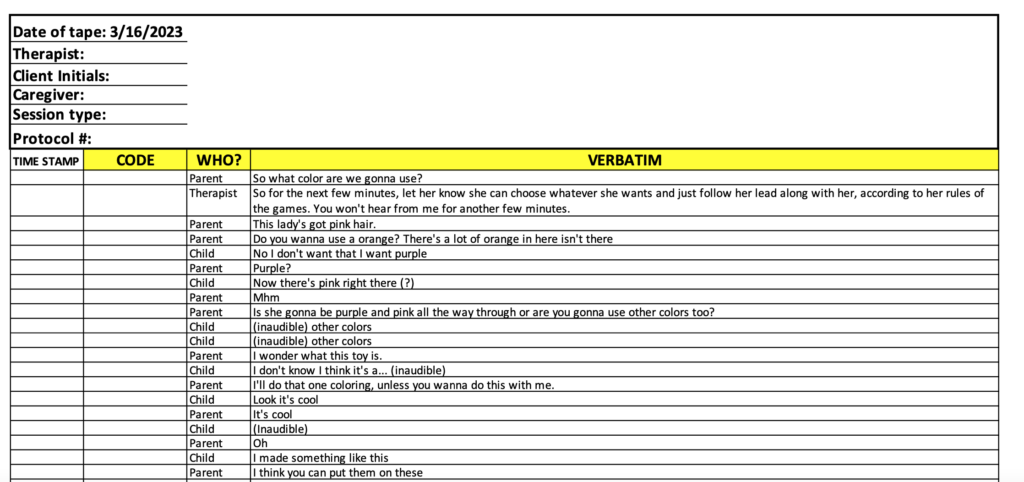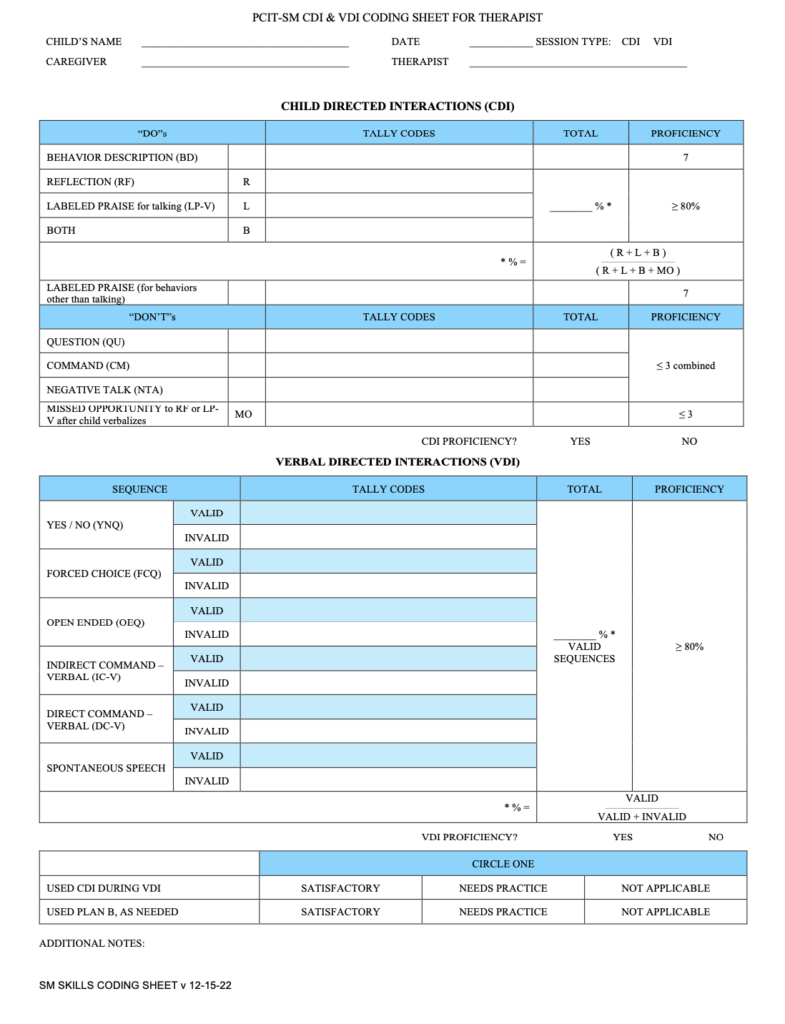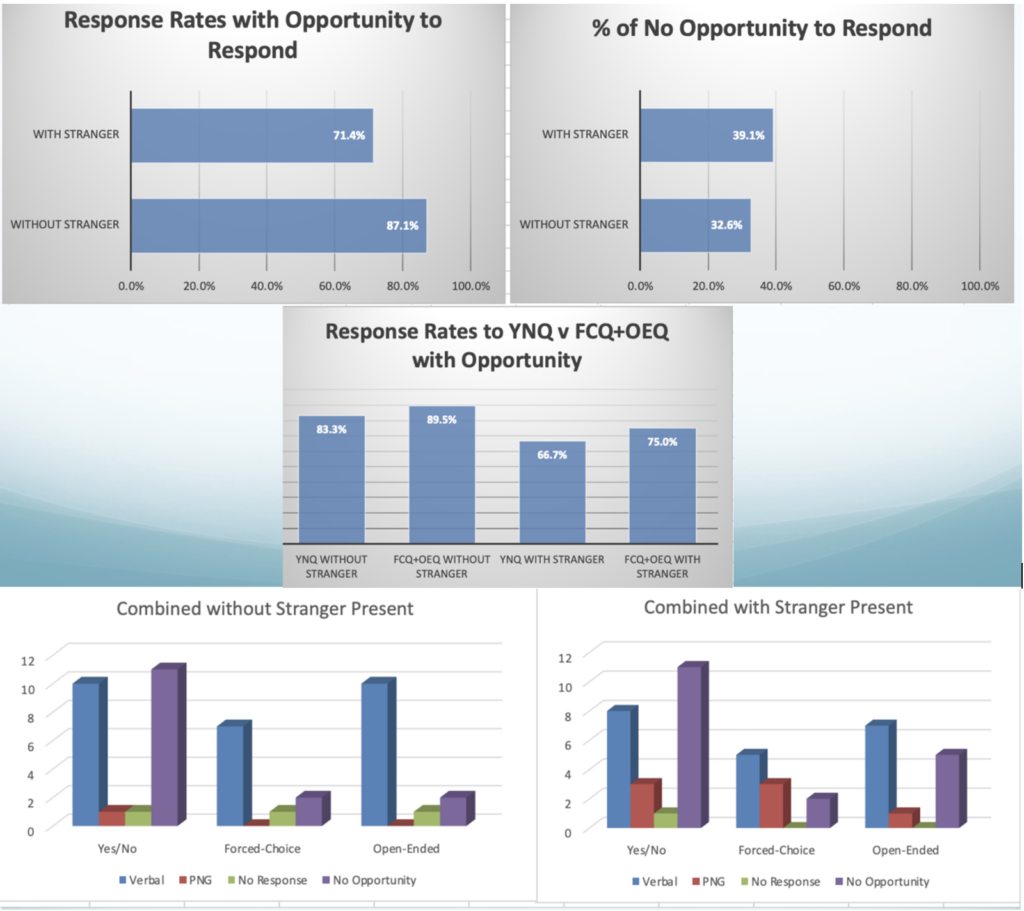Click on the YouTube video to see a sample SM-BOT. Use the resources below to code the video.

- HOME
- ABOUT
- WHAT & HOW WE TREAT
- SELECTIVE MUTISM
- BEHAVIOR PROBLEMS
- OCD & RELATED DISORDERS
- BLOG
- RESOURCES
- TRAINING & EMPLOYMENT
- Lunch ‘n Learn Webinars
- Parent-Child Interaction Therapy (PCIT) Training for Mental Health Professionals
- Parent-Child Interaction Therapy Adapted for Selective Mutism (PCIT-SM) Training
- Within Agency Training for PCIT Therapists to Become Trainers
- Training & Consulting for Professionals
- Pre-Professional Training
- Teacher-Child Interaction Training (TCIT) for Educators & Schools
- Employment
- CONTACT


- HOME
- ABOUT
- WHAT & HOW WE TREAT
- SELECTIVE MUTISM
- BEHAVIOR PROBLEMS
- OCD & RELATED DISORDERS
- BLOG
- RESOURCES
- TRAINING & EMPLOYMENT
- Lunch ‘n Learn Webinars
- Parent-Child Interaction Therapy (PCIT) Training for Mental Health Professionals
- Parent-Child Interaction Therapy Adapted for Selective Mutism (PCIT-SM) Training
- Within Agency Training for PCIT Therapists to Become Trainers
- Training & Consulting for Professionals
- Pre-Professional Training
- Teacher-Child Interaction Training (TCIT) for Educators & Schools
- Employment
- CONTACT
SM-BOT - The PCIT-SM Behavioral Observation Task
Click on the image above for a PDF of the SM-BOT Instructions.
Click on the image above for a PDF of the SM-BOT Coding Sheet.
Click on the image above to print a PDF of the transcript of the SM-BOT recording shown above. You can use the transcript to code and then send to sm@kurtzpsychology.com to check your coding reliability.
Click on the image above for a PDF of the coding sheet used in treatment sessions to assess both CDI and VDI skills.
Our treatment for selective mutism (SM) is Parent-Child Interaction Therapy Adapted for Selective Mutism (PCIT-SM). PCIT-SM is an adaptation of Parent-Child Interaction Therapy (PCIT). The SM-BOT is the baseline observation procedure we use to gather data about parent-child interactions among children and families dealing with SM at the start of treatment. The SM-BOT is derived from the DPICS task that is part of Parent-Child Interaction Therapy (PCIT).
The SM-BOT is a carefully designed series of analog situations that are intended to mimic what happens when children with SM need to speak with someone other than their parents. We designed the SM-BOT in such a way that the parent and child first warm-up in play together. We then observe the parent asking, and the child responding to, different types of questions, i.e., yes/no, forced-choice and open-ended. We then have a trained staff member go in pretending to be a stranger who sits in the room doing some work while the parent-child dyad continue playing for a few minutes. We then have the parent ask the different questions types, aiming for five (5) of each, but now in the presence of the stranger. The stranger then does some child-centered play before asking one forced-choice question. We repeat these two steps again: parent and child without stranger followed by parent and child with the stranger.
We then have the stranger leave and tell the parent to guide a clean-up of the toys. This gives us an opportunity to see if the child is generally compliant and how the parent goes about guiding the clean-up. Do they use direct or indirect prompts? Do they praise compliance? What do they do if the child gives pushback to cleaning up. This is important information as we start treatment to see how comfortable the parent is being authoritative, i.e, clear expectations with lots of warm support. The stranger then returns and prompts the parent to leave ostensibly to complete some forms. This serves as a separation task for us to see how the dyad handles the separation. Some children with SM also have some issues separating, and this may impact the treatment as we move forward to do the therapy with the child.
The SM-BOT is scored to see if the child responds verbally to prompted questions, responds non-verbally, or doesn’t respond at all. We also tally if the parent actually gives the child 5-seconds to respond to questions before moving on. We call this Opportunity to Respond. The verbalizations are scored using the Selective Mutism Interaction Coding System – Extended Revised (SMICS-ER) which has gone through a few revisions over the years since 2007 when we first formalized this procedure. After scoring, we then enter the data to a specialized Excel template which automatically produces graphic output like you see below.
The clinician can then review the baseline data to see what the parent-child dyad’s starting point for treatment is. We can then review this information with the parents in their feedback and treatment planning sessions. We aim for a high percentage of question prompts that give the child the best opportunity to respond. Data collected over the years suggests that forced-choice and open-ended questions are preferred over yes/no questions, and that children respond most when the parent gives them at least 5-seconds to respond.
Here is sample data for a typical patient with SM – a 5-year old child with no prior treatment who has had impairing symptoms for a couple of years:
-
April 6, 2022
Supporting Your Child’s Sleep
-
April 1, 2022
How to Support Anxious Children in Being Brave
-
March 10, 2022
Awareness is Prevention: Self Harm Awareness Month
